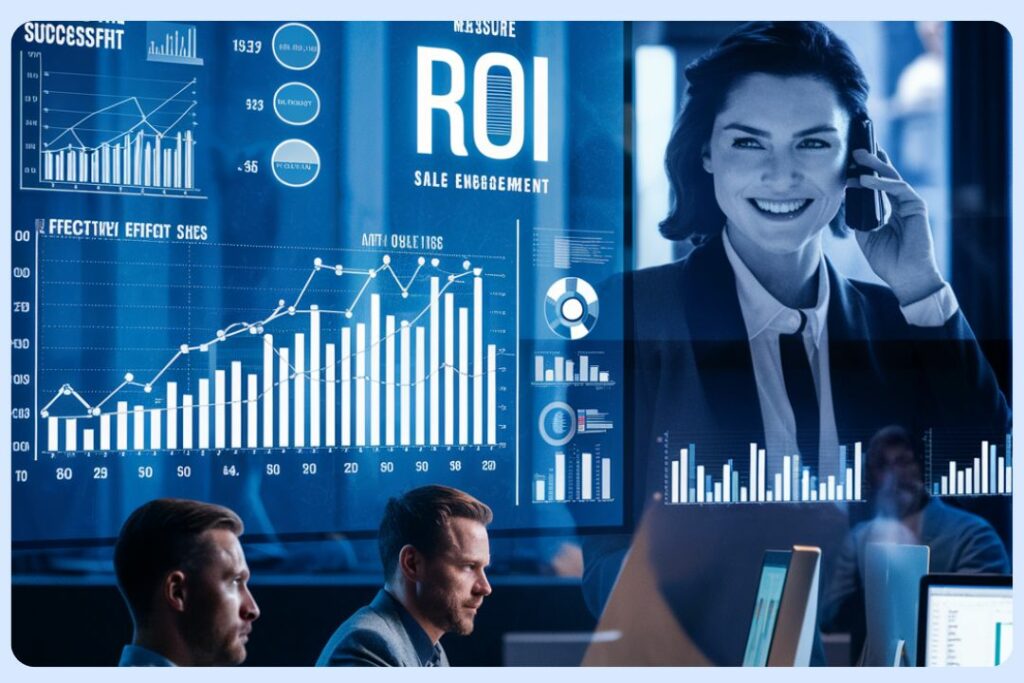Maximizing ROI: Demystifying Metrics And Analytics In Sales Engagement With Field Service Management Software

As the business ecosystem becomes more competitive, understanding the return on investment (ROI) of sales engagement efforts is paramount for financial institutions looking to drive growth and optimize strategies. As banks and insurance firms seek to enhance the effectiveness of their sales processes, leveraging data becomes indispensable.
Field Service Management (FSM) software has proven to be a game-changer for banks and NBFCs, allowing them to monitor their field sales agents, enhance efficiency and boost productivity by automating manual processes. While they play a huge role in streamlining daily client visits, planning routes, managing leads, expenses and much more, their greatest contribution is in offering detailed reports and analytics which allow decision-makers to plan their sales operations more effectively. By gathering and visualizing business and activity data effectively, institutions can tie activities and strategies back to tangible business outcomes, thereby fostering positive sales behaviors. In this blog,
we delve into the significance of measuring ROI in sales engagement and explore key metrics and analytics that enable financial institutions to make data-driven decisions and achieve tangible results.
Importance of Measuring ROI in Sales Engagement:

Measuring ROI in sales engagement provides valuable insights into the effectiveness of sales efforts and their impact on the bottom line. By quantifying returns from various sales activities, institutions can identify strengths and areas for improvement, ultimately driving greater efficiency and profitability. Moreover, ROI measurement enables strategic resource allocation, allowing institutions to invest in initiatives that yield the highest returns, thus driving sustainable growth.
Key Metrics for Measuring ROI:
Customer Acquisition Cost (CAC):

A pivotal metric that quantifies the total expenditure involved in acquiring a new customer. It encompasses not only monetary costs but also the time, effort, and resources invested by an organization’s sales and marketing teams, along with other associated expenses. By juxtaposing CAC with the lifetime value of a customer (LTV), financial institutions can gauge the effectiveness and sustainability of their customer acquisition endeavors, taking into account both financial outlays and engagement efforts exerted by individual sales representatives. It is imperative to lower CAC while concurrently maintaining or augmenting LTV to optimize ROI in sales engagement.
Sales Pipeline Velocity:

A crucial metric that gauges the pace at which leads progress through the sales pipeline. Sales teams have a range of strategies at their disposal to enhance pipeline velocity, including modifying customer engagement channels, frequencies, or strategies. Given the direct correlation between the activities undertaken by sales representatives and sales outcomes, a higher pipeline velocity signifies increased efficiency and effectiveness in sales engagement. By monitoring this metric, institutions can pinpoint areas of friction and deploy strategies to expedite deal progression, thereby optimizing sales performance.
Sales Rep Effectiveness or Sales Representative Performance
This metric evaluates the efficiency and effectiveness of individual sales representatives in generating revenue and meeting sales objectives. It considers various factors, including the number of deals closed, average deal size, deal closure time, and the number of activities undertaken before closing a deal. By assessing sales rep performance, financial institutions can identify top achievers, identify areas for enhancement, and refine sales strategies to improve overall sales performance and profitability.
In addition to the above KPIs, financial institutions should also monitor other essential metrics outlined in this article. Each of these metrics, including those mentioned earlier, is directly linked to business outcomes. Therefore, capturing activity metrics at every stage and correlating them provides actionable insights essential for informed decision-making.
Leveraging Analytics for Actionable Insights: Analytics are instrumental in converting raw data into actionable insights that inform decision-making. An advanced field force management solution like IMPRINT offers sophisticated analytics
dashboard that empowers financial institutions to analyze extensive sales data, unveil significant patterns, and derive valuable insights.
Predictive analytics, for instance, predict future sales trends and pinpoint opportunities for revenue expansion. By harnessing historical data and machine learning algorithms, a modern sales force management tool can anticipate customer preferences, prioritize leads, and tailor engagement strategies for financial institutions, maximizing their effectiveness.
Conclusion
Measuring ROI in sales engagement is crucial for driving growth and maximizing profitability. A field service management software like IMPRINT helps clients track key metrics, gaining valuable insights into sales effectiveness and improvement opportunities. Leveraging advanced analytics enables institutions to extract actionable insights, driving strategic initiatives and sustained success in sales engagement. A comprehensive understanding of ROI metrics and analytics is essential for achieving long-term success. Allow us to take you through the advanced features of our AI-powered FSM tool that can take your sales efforts to the next level. – contact us or schedule a demo right away!
FAQ’S
Why is measuring ROI in sales engagement important for financial institutions?
Measuring ROI helps financial institutions understand the effectiveness of their sales efforts and their impact on profitability. It allows them to identify areas for improvement, allocate resources strategically, and drive sustainable growth.
What are some key metrics used to measure ROI in sales engagement?
Key metrics include Customer Acquisition Cost (CAC), Sales Pipeline Velocity, and Sales Representative Performance. These metrics provide insights into customer acquisition efficiency, deal progression, and individual sales effectiveness.
How does Customer Acquisition Cost (CAC) influence ROI in sales engagement?
CAC measures the total expenditure involved in acquiring a new customer, including monetary costs, time, effort, and resources. Lowering CAC while maintaining or increasing Customer Lifetime Value (LTV) is crucial for optimizing ROI in sales engagement.
What is Sales Pipeline velocity, and why is it significant?
Sales Pipeline Velocity tracks the speed at which leads move through the sales pipeline. It indicates sales efficiency and effectiveness, helping institutions identify bottlenecks and improve sales performance.
How can financial institutions leverage analytics to improve sales engagement?
Analytics transform raw data into actionable insights, enabling informed decision-making. Advanced analytics tools like IMPRINT offer predictive analytics to anticipate sales trends, prioritize leads, and customize engagement strategies, driving greater success in sales engagement initiatives.
Quick Read: Calculating ROI for Field Service Performance Management Software Imprint
Quick Read: The ROI of Investing in a Field Force Management Solution for Your Business